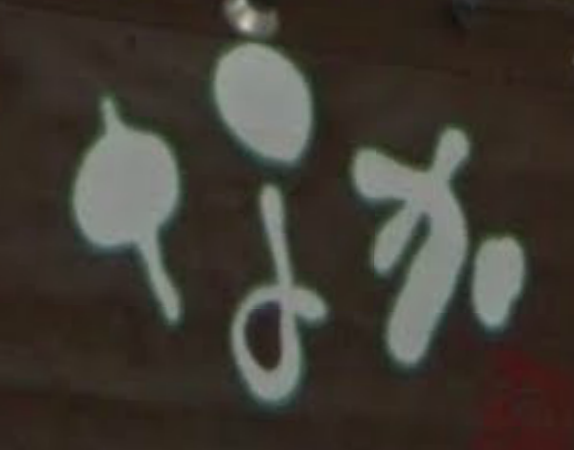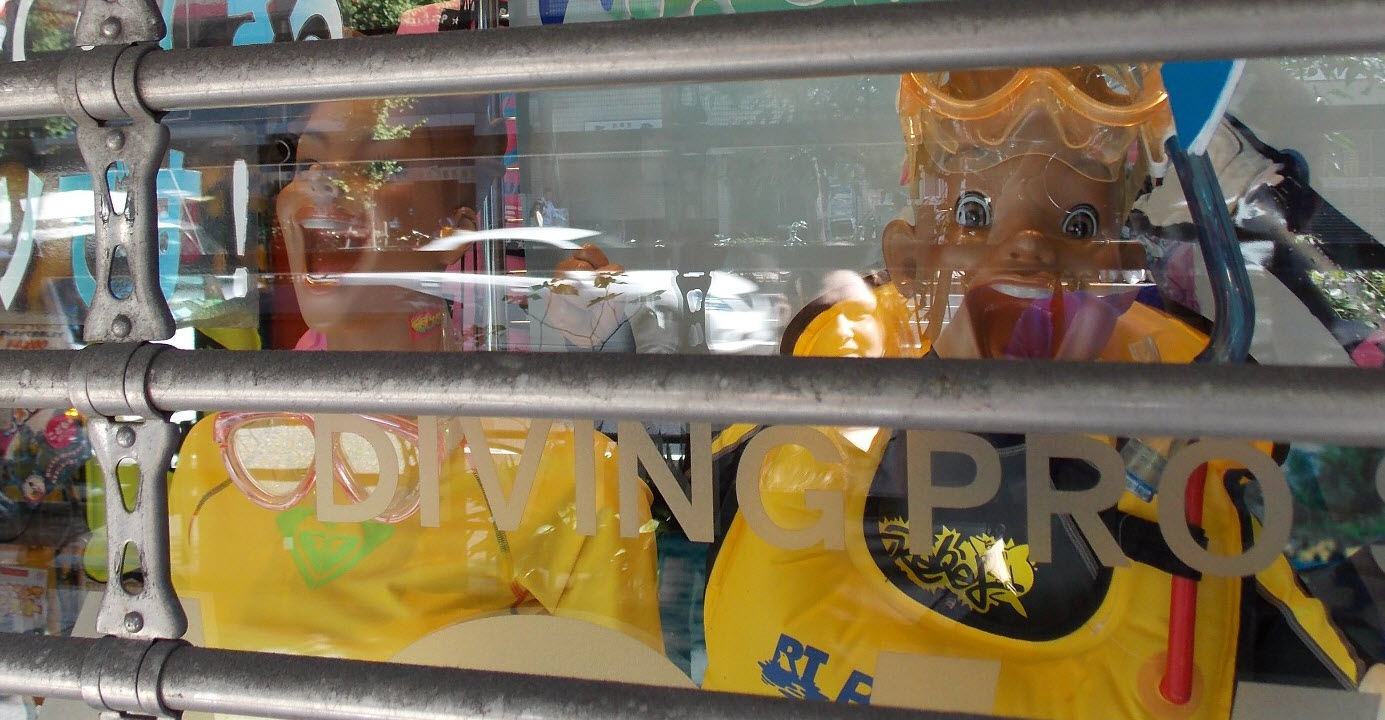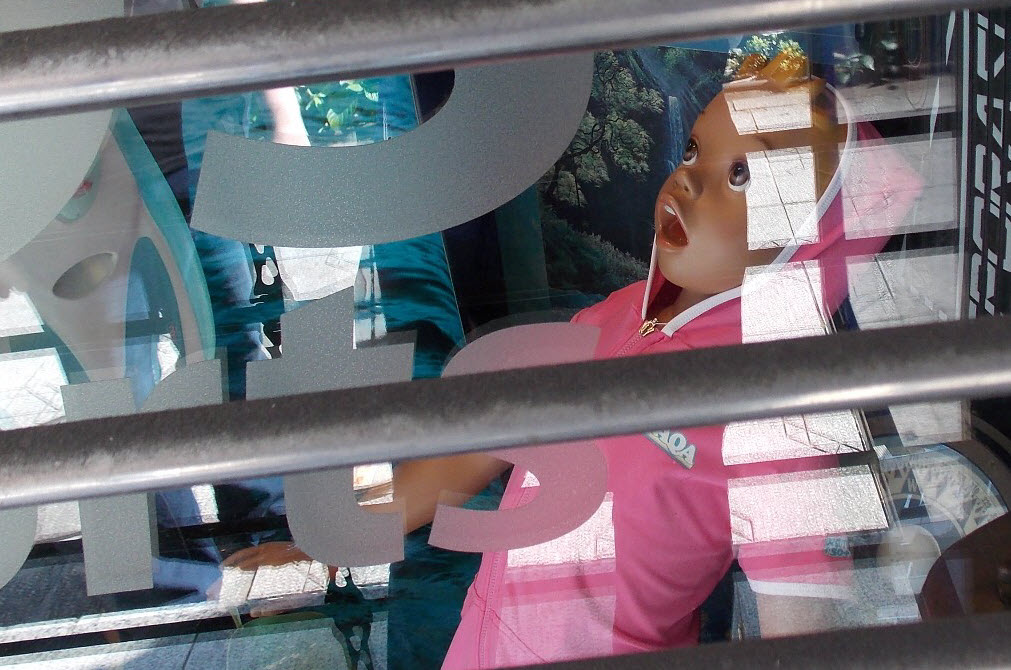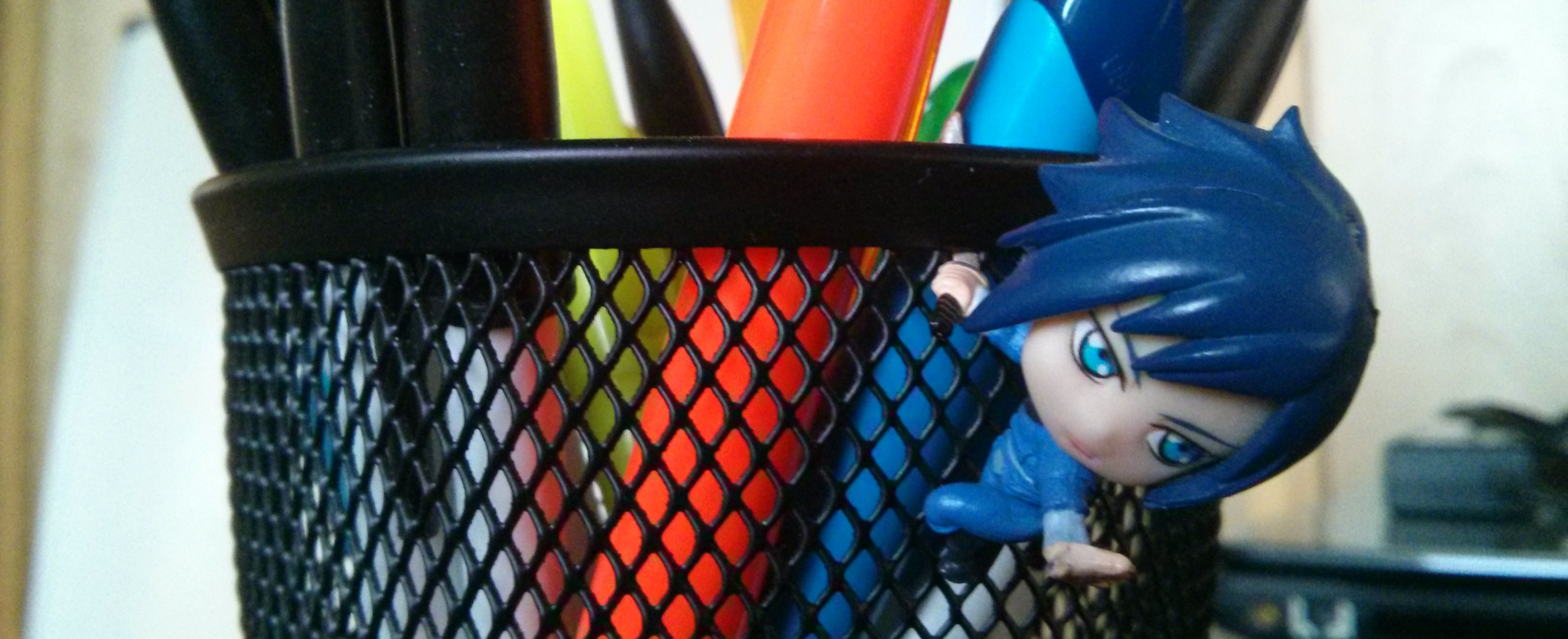Jess and I had exchanged some American money for yen with our bank in preparation for our trip to Japan, but this was mostly to cover our lodgings. Some of the hotels explicitly said they accepted credit cards, some that they did not: this left us in the dark for those that didn't make a clear proclamation and wary that those that did might have stopped without updating their English-language materials. We had enough yen set aside to make sure we would have a roof over our heads but little more.
That is how we ended up offending, or at least bewildering, the front-desk clerk at our hotel. I could not, for the life of me, remember the necessary words and grammar to ask where we could exchange money. Everything I was coming up with was going to make me sound like a mugger. Instead of fumbling through with broken Japanese mixed with pantomime, which would have been much quicker if not as dignified, I became obsessed with asking properly. (Keep in mind that this was mere hours after I failed to grasp what ended up being extremely simple directions to our hotel and got us lost for hours. Things went much better for us once I finally began operating from a position of assumed ignorance.)
As it turns out, hotel lobbies are one of the few places I found that might have Wifi, so I turned to Google Translate. (Good decision.) Instead of looking up the entire sentence, I just looked up words that I was missing. (Bad decision.) Once I had the question arranged in my head, I ran it through Google Translate. (Good decision.) Google came back with a nonsensical sentence, but I had seen translations get jumbled when I knew that the grammar was correct, so I asked the clerk using that construction, anyways. (Very bad decision.)
He stared at me, "Ano... [Um...]"
I pointed to where I had my question typed out in Japanese on my phone. "Sumimasen. Nihongo o ikute hanashimasen. [Sorry. I don't speak Japanese well.]"
The clerk leaned in to read the sentence. "Chotto... [That's a little...]" He was blushing.
I quickly switched Google Translate to English > Japanese and looked up my question. I held up my phone with one hand, held up a few American and Japanese bills in the other and put on a big I'm stupid grin for good measure.
The clerk let out an audible sigh of relief. "Hai, [Yes,]" he said, smiling, slightly, for the first time in our conversation. He reached under the counter and gave me a small map that marked our hotel and a store called Yodobashi Akiba a few blocks away. In broken English, the paper explained that we could exchange money at the Travelex inside.
I said, "Arigatou gozaimasu, [Thank you,]" and tried to not show how little I was looking forward to following another map.
For his part, the clerk wouldn't make eye contact with either of us for the rest of our stay.
Before embarking on our journey to buy gold1, we went to the main road and made note of the corners: the blue sign with "Sawayaka" and then kanji I didn't recognize to our right2, Fashion Purse to our left, and Café Venus across the street. The fourth corner had a restaurant that I couldn't make out due to the stylized writing.

Most of you will just have to take my word that it's hard to read.
Google Maps says it should take about sixteen minutes to walk from APA Hotel Kodenmacho-ekimae to Yodobashi Akiba; it took us a bit longer. There was another river between us and our destination, and we could not tell from the map whether or not we would be able to cross on foot at the nearest bridge. Apparently, my mind sees bodies of water as some unknowable dark art when they appear on a map.
Once we were convinced that we could at least recognize the immediate area around our hotel, we set out looking for Yodobashi Akiba using an extremely roundabout route. Each time we turned on a road, we located as many landmarks as possible: at least we would be able to find our way back, even if we failed to actually exchange our money. There were definite pluses to taking the long way around. I would have completely missed out on the most terrifying mannequins to ever grace God's green earth.

Don't even blink. Blink and you're dead.
Even the other mannequins seemed to be freaked out by them.

About halfway to our destination, rush hour hit. The streets and sidewalks had already been considerably busy, but out of nowhere, we were surrounded by a steady current of human bodies spewing from the subway stations, with Jess and me serving as the large rocks that they had to flow around. Salarymen rushed along at a steady pace. Sailor girls walked along with their friends or had their attention firmly attached to their phones while still, somehow, skillfully navigating the crowd. Tiny, tiny kids darted in and out of the crowd with precision that really has to be seen to be believed.
Tokyo had come to life, and it was a bit scary, at first.
Once we were on the same block as Yodobashi Akiba, we found something that I just couldn't pass up. The entire front of the "store" was plate glass, revealing a tiny hallway running parallel to the street. Inside, there were no employees, no cash registers, just an entire wall covered in capsule toy vending machines.

Unlike American capsule toys, which typically run between 25¢ and 50¢, Japanese capsule toys range from at ¥100 to ¥500, which was about $1.20 to $7.50.3 Also unlike American capsule toys, these are actually worth it. Any given machine will normally have a theme, such as having characters from a specific game or anime series, and it is fairly common for discontinued capsule toys to become collectors' items and sell for much more than their original prices on the secondhand market.
I bought a few to give to some of the kids back in America and a few for myself.

This guy has been keeping me company at work since I got back.
Just around the corner from the capsule toy room of wonder, we found Yodobashi Akiba. The actual building was eight stories tall, so we were hoping that the money exchange would be on the bottom floor, or at least have directions posted.

By Rs1421 (Own work) CC-BY-SA-3.0, via Wikimedia Commons
We had no idea what we were walking into.
Without realizing it, we had wondered from Kodenmacho to Akihabara, also known as Electric Town, a mecca for those interested in anime, manga, video games and tech. (I still don't understand how I hadn't heard of it before.) Yodobashi Camera is a nationwide electronics chain store, and this was their megastore, in the heart of a tech destination.
Upon entering the store, we turned to the right and found ourselves with a line of men trying to sell cell phones on either side of us. They greeted us with, "Konbanwa, [Good evening,]" and a bow as we passed. We continued down the bowing corridor until we were almost to the other side of the building.
"I don't think this is the right place," Jess said.
"The arrow on the map pointed into this building, though. Let's get out of the way and check it again."
"Yay! We get to leave the scary building."
To our surprise, the same men bowed and said, "Konbanwa," as we were leaving, even though we had literally just passed them. For a moment, I thought that it would be fun to just pace back and forth in front of a bunch of them to see how long it would take for one to get fed up, but past me made the wise and kind decision to not do that.
Outside, we checked the map, and sure enough, there was section that showed Yodobashi Akiba zoomed in and had an arrow pointing into the building at a little kiosk marked Travelex. Thinking that it might just not be to scale, we decided to walk around the entire block. Other than a Japanese McDonald's, though, we didn't really find anything noteworthy. That is, until we had nearly completed the circuit.
Just a little off from the entrance to Yodobashi Akiba, there was a small area with benches and tables set up, all of them occupied by men, boys and a few girls on 3DS and PS Vita systems. Along the outside wall were posters for different games that were recently released or up for preorder. I now wanted to further explore the store, but knew that our quest was not yet complete.
Thankfully, this pause also caused us to look back the way we came. The building had a recessed, outside walkway that we had completely missed. There, just inside of this semi-hidden walkway, was the Travelex. Not wanting to repeat my mistake at the hotel, I took out some yen along with the American money we wanted to exchange and braced myself.
The woman behind the counter looked at me holding up both currencies and asked, "To which currency would you like to exchange?"
"Oh! Yen, please," I said.
She counted out the bills I gave her, counted out the yen I would get back and gave it to me. "There you go. Have a good evening."
I said, "Konbanwa," even though I meant to respond again in English. Sometimes, my brain just seems to hate me.
Jess asked, "What now?"
"Back into the scary building?" I gave Jess my best attempt at puppy dog eyes. I'm not sure how well I do them, though, because I've never seen myself make the attempt. I suppose I could watch myself in a mirror, but that seems like something a crazy person would do. In any case, it worked.
The bottom floor of Yodobashi Akiba didn't really have anything that interested me, so we found the escalators at the center of the store and rode them up. For each floor, we got off the escalator, looked around to see if there was anything particularly noteworthy, then turned right around and continued our climb if there wasn't. There was plenty that I wanted to investigate, but it had already been a long day, and being surrounded by so many people was beginning to wear on both of us. We eventually found the video game area of the store. I was simply overjoyed looking around at the different box art for games that I knew and seeing the selection of games that had never been exported.
When I was on the cusp of geek overload, we headed back to the bottom floor, walked down the bowing corridor and followed our trail of landmarks back to the hotel without incident.
We were learning.
- "Okane" is Japanese for money but uses the Chinese character for gold. ↩
- I've since discovered that "Shinkin" was the part I was missing. Shinkin are similar to credit unions. ↩
- For ease, and to limit spending, we were estimating American currency costs by considering ¥1 equal to 1.5¢. In reality, our exchange rate fluctuated between 1.2¢ and 1.3¢ per yen. At the time of this writing, ¥1 is exchanging at 0.97¢, making the capsule toys just under 97¢ to $4.85. ↩
This post is part of a series:
- More stories will be coming soon.
- Or you can consult the table of contents.
